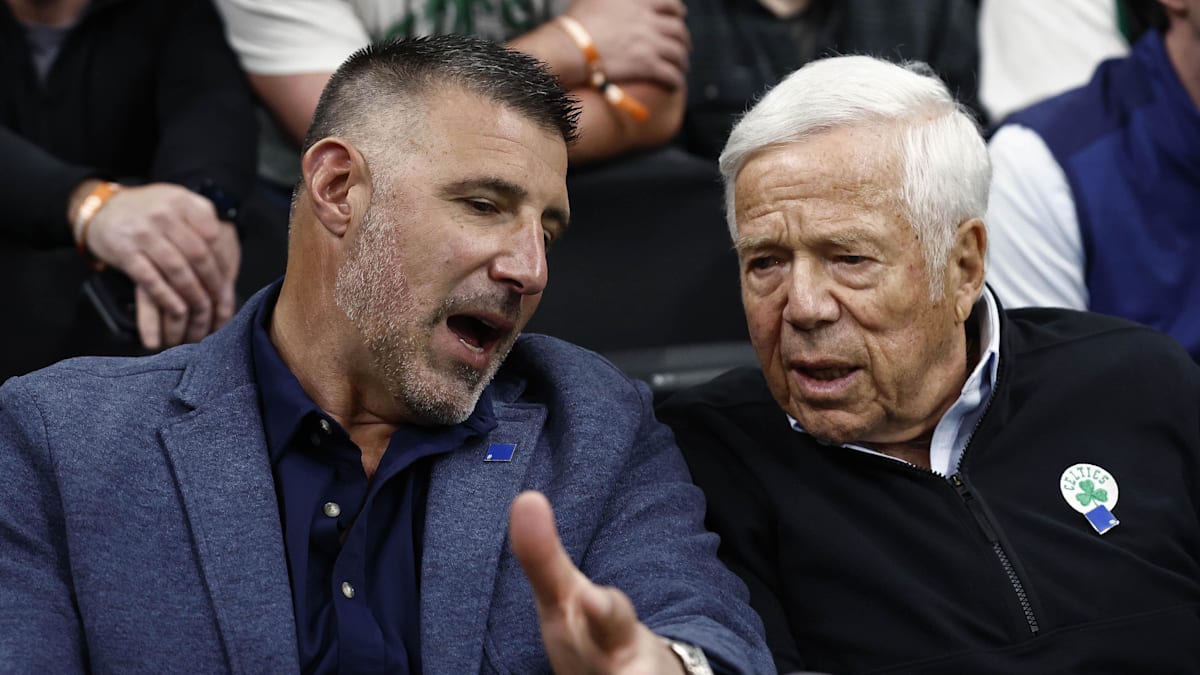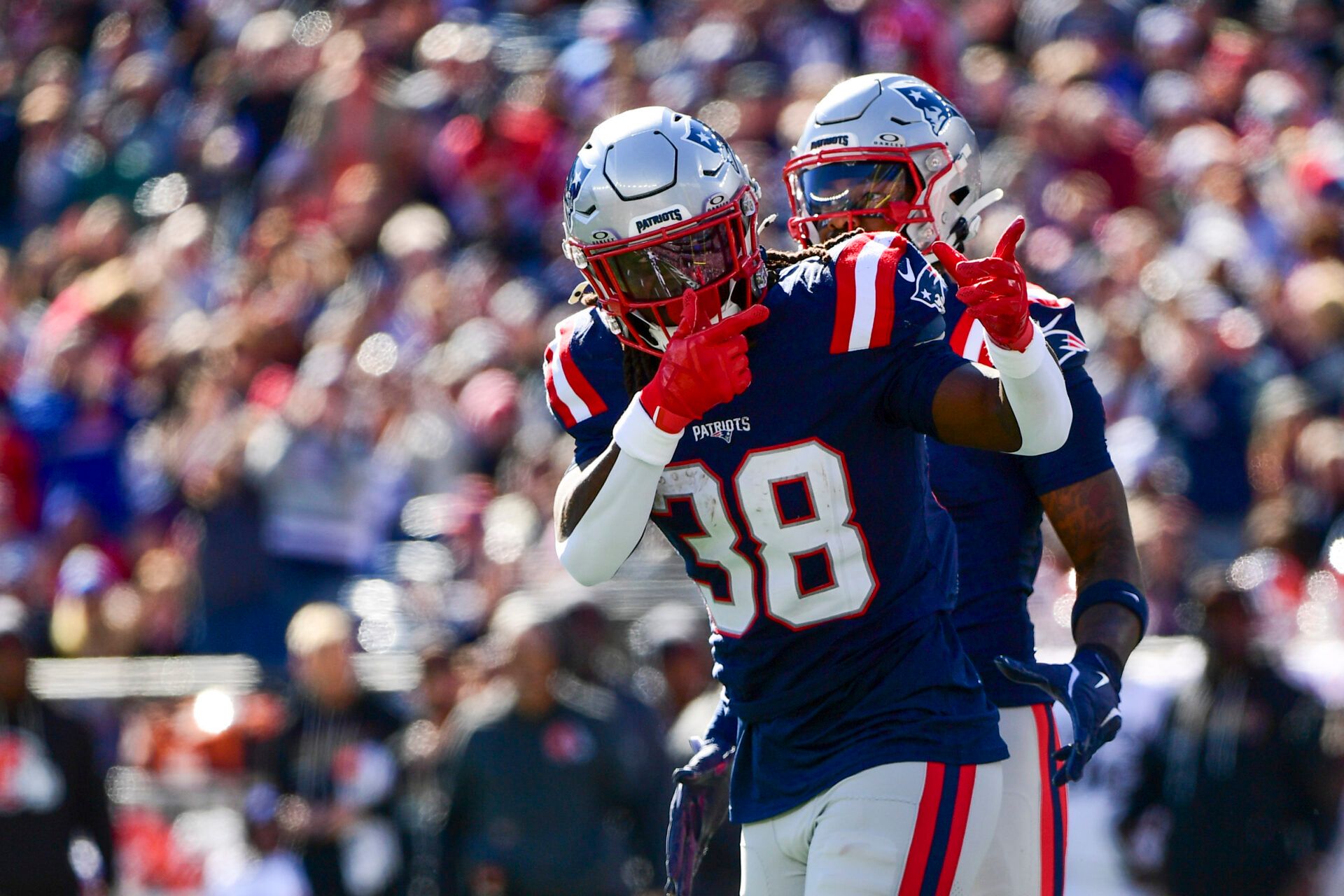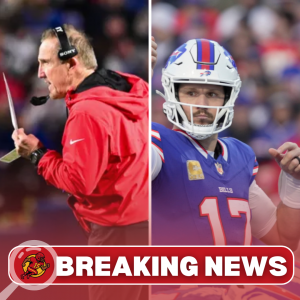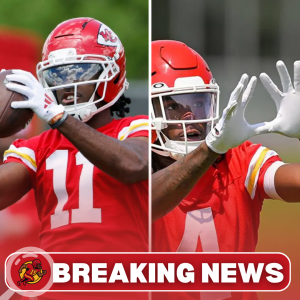Patriots Stand Pat at Trade Deadline, Add Brenden Rice to Practice Squad
As the NFL trade deadline came and went on Tuesday, the New England Patriots made it clear that they were content with the roster they have, opting for minimal movement. While many teams made headlines with blockbuster deals, New England’s only transaction saw them sign wide receiver Brenden Rice to the practice squad, necessitating the release of veteran running back Jonathan Ward.
Rice, the son of Hall of Famer Jerry Rice, brings both a recognizable pedigree and a layer of depth for a Patriots offense dealing with injuries. Kayshon Boutte, the team’s emerging playmaker, has been hampered by a hamstring issue and could miss multiple games. Rice’s addition provides a contingency plan, ensuring that the Patriots have sufficient options at receiver without having to make a more drastic trade or roster shakeup.
“Patriots sign WR Brenden Rice to the practice squad; Release RB Jonathan Ward from the practice squad,” the team announced via X.
While the move drew attention due to Rice’s lineage, it’s a pragmatic addition more than a high-profile statement. The Patriots have built a reputation for scouting talent and developing players internally, often preferring calculated roster management over splashing cash or draft picks on new acquisitions. Tuesday’s quiet deadline strategy underscores that philosophy: New England trusts its current roster to weather injuries and stay competitive in the AFC East.
Jonathan Ward’s Departure
For Ward, the decision to release him was predictable. He joined the Patriots’ practice squad only last week after Terrell Jennings was elevated to the active roster. Alongside Ward, the practice squad already housed running backs Rushawn Baker and D’Ernest Johnson, and with Johnson promoted for Week 9, Ward’s tenure was always going to be precarious.
Ward’s release highlights the fine margins for players on practice squads. While these rosters allow teams to keep developmental talent close, they also require constant juggling as injuries and roster needs emerge. In Ward’s case, the depth at running back made his position expendable — at least temporarily — until injuries or performance gaps create a new opportunity.
Patriots Running Back Depth

Despite Ward’s departure, the Patriots’ running back position remains well-staffed. Rhamondre Stevenson continues to anchor the backfield as the primary rusher, with Terrell Jennings providing a reliable backup and TreVeyon Henderson rounding out the depth chart. The strategy appears clear: the Patriots are confident that the current mix of veterans and younger players can carry the team through the stretch run without requiring external additions.
That said, the team cannot be complacent. Stevenson has already missed time due to a toe injury, and while Jennings has shown flashes of promise, he has not yet been tested as a lead back for a full game in the current system. If Stevenson were to miss a second straight game, the absence of Ward could be felt, putting added pressure on Jennings and Henderson to deliver.
From a roster management standpoint, the Patriots’ approach makes sense. Rather than committing additional salary or draft assets to acquire a short-term solution, they rely on internal development and rotational depth. It’s a strategy that has worked in the past under Bill Belichick’s tenure, where the emphasis is on coaching and player development rather than high-profile trades.
Brenden Rice: Talent and Potential
 Brenden Rice’s addition to the practice squad brings an interesting dynamic. A product of South Carolina, Rice possesses size, hands, and athleticism that could translate well to New England’s system if given the opportunity. While he has not yet proven himself in the NFL, his lineage and training background give coaches confidence in his ability to adapt.
Brenden Rice’s addition to the practice squad brings an interesting dynamic. A product of South Carolina, Rice possesses size, hands, and athleticism that could translate well to New England’s system if given the opportunity. While he has not yet proven himself in the NFL, his lineage and training background give coaches confidence in his ability to adapt.
Rice has spent time on other NFL rosters previously, showing flashes of potential but not yet securing a permanent spot. New England’s interest signals that the Patriots believe he can contribute, especially in a season where injuries to the wide receiver corps could necessitate depth. The signing also reflects a strategic philosophy: adding a young, developmental player to provide insurance without disrupting the core roster.
Trade Deadline Philosophy
Across the league, the trade deadline serves as a critical inflection point. Teams contending for playoff spots often make aggressive moves to bolster weaknesses, while those out of contention trade for future assets. The Patriots’ minimal action contrasts with other AFC East teams, highlighting a calculated decision to rely on their current roster and coaching staff.
Teams like the Buffalo Bills and Miami Dolphins were active in trading and acquiring talent, aiming to address immediate needs for playoff pushes. New England, however, chose stability over volatility. This approach could pay off if the team’s roster remains healthy and key players like Stevenson and Boutte return in top form. Conversely, it carries risks if injuries pile up or certain units underperform in the coming weeks.
Implications for the Patriots Offense
From an offensive perspective, Rice’s addition is primarily insurance, but it also opens the door for potential scheme flexibility. The Patriots have relied heavily on short-to-intermediate passing concepts under offensive coordinator Matt Patricia, emphasizing timing, route precision, and quarterback decision-making. A player like Rice, with size and athleticism, could be used in specific packages to create matchup advantages or stretch the field vertically.
Moreover, having Rice on the practice squad allows quarterbacks to familiarize themselves with a new option in case of emergency call-ups. For a team like New England, where continuity and preparation are emphasized, this ensures readiness without needing to rush untested players into live-game situations.
AFC East Outlook
The Patriots currently sit atop the AFC East standings with a 7-2 record, keeping pace with the Bills and Dolphins in what remains one of the most competitive divisions in the league. Maintaining roster stability while managing minor injuries could be a key factor in their ability to hold off division rivals.
The decision to stand pat at the trade deadline also sends a message to the team: trust in the current roster, focus on development, and execute at a high level. In a division where margins are slim, consistency may prove just as valuable as high-profile acquisitions.
Looking Ahead
As the Patriots enter the midseason stretch, the focus will shift to health and execution. Key players like Stevenson and Boutte must remain available, and the offensive line must provide reliable protection to allow Mac Jones and the passing game to thrive.
Meanwhile, Rice’s presence on the practice squad gives the team flexibility and depth, providing insurance without altering the existing chemistry. In a league where injuries and unexpected circumstances are inevitable, having a prepared, capable practice squad player can make a subtle but meaningful difference.
For the Patriots, Tuesday’s trade deadline was not about headlines or shock-value moves. It was about reinforcing depth, preparing for contingencies, and maintaining a sense of continuity in a season where execution and discipline remain paramount.
As the season progresses, the success of this strategy will depend on the health and performance of key contributors, the ability of young players to step up when called upon, and the Patriots’ continued emphasis on coaching and preparation. For now, Brenden Rice is a low-risk addition, Jonathan Ward moves on, and New England stays focused on the path ahead.






